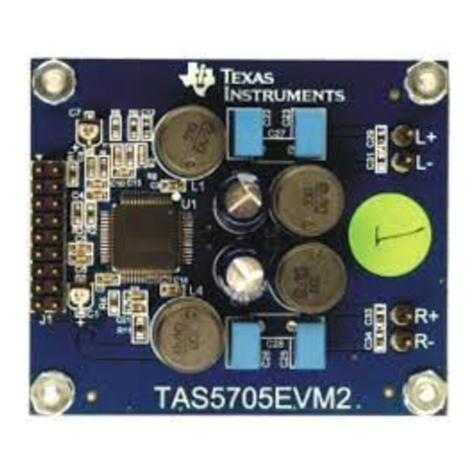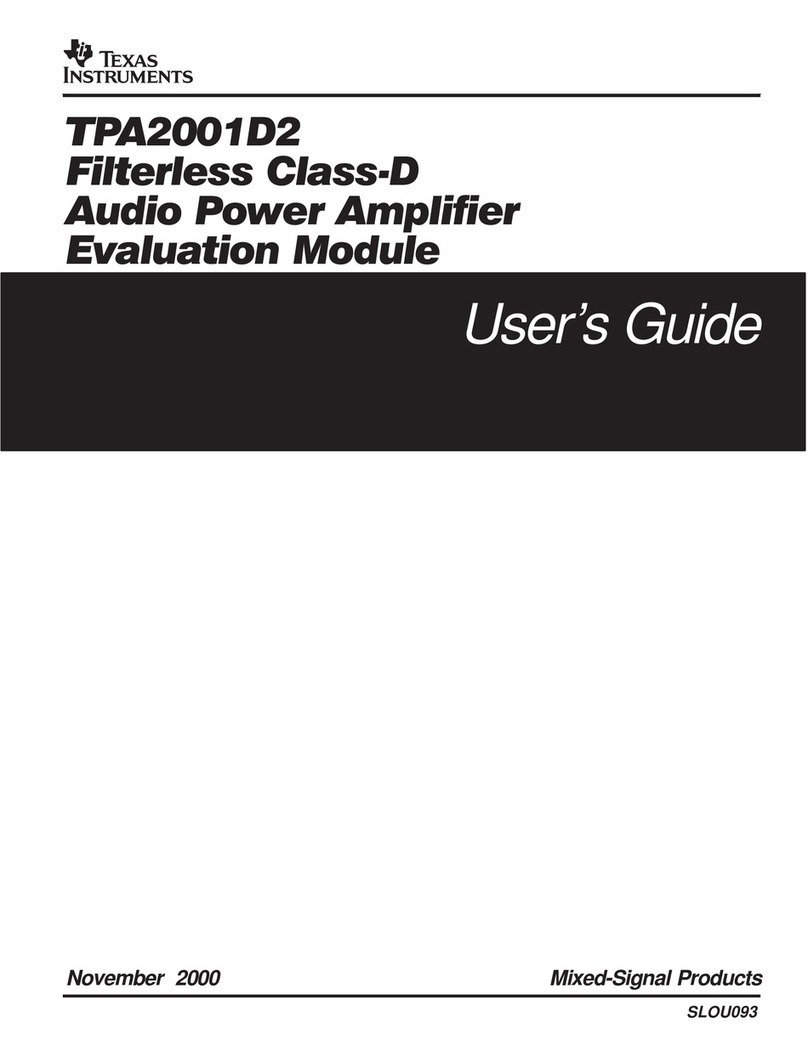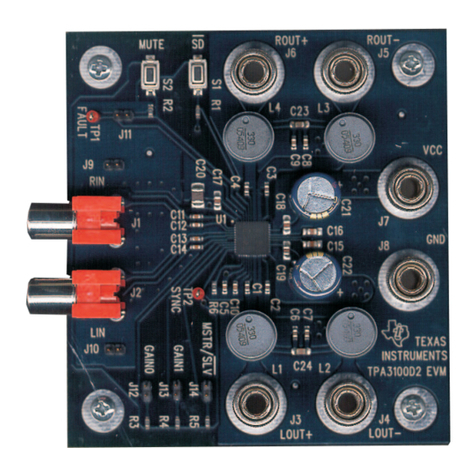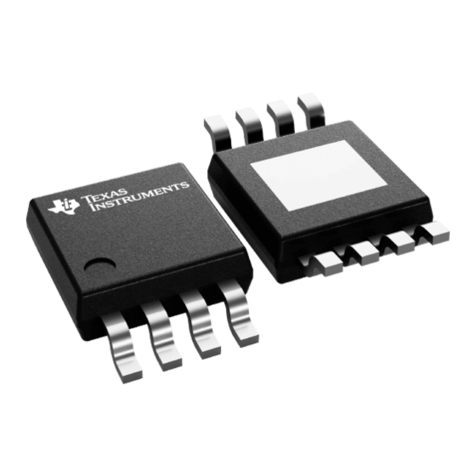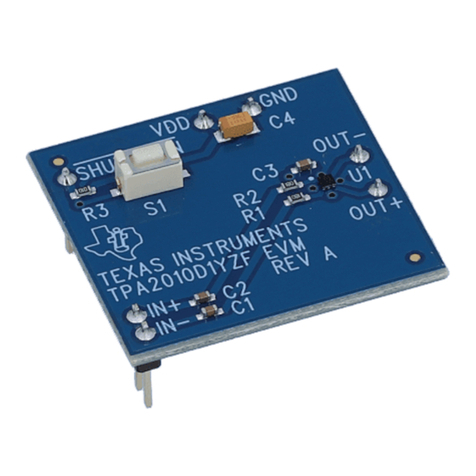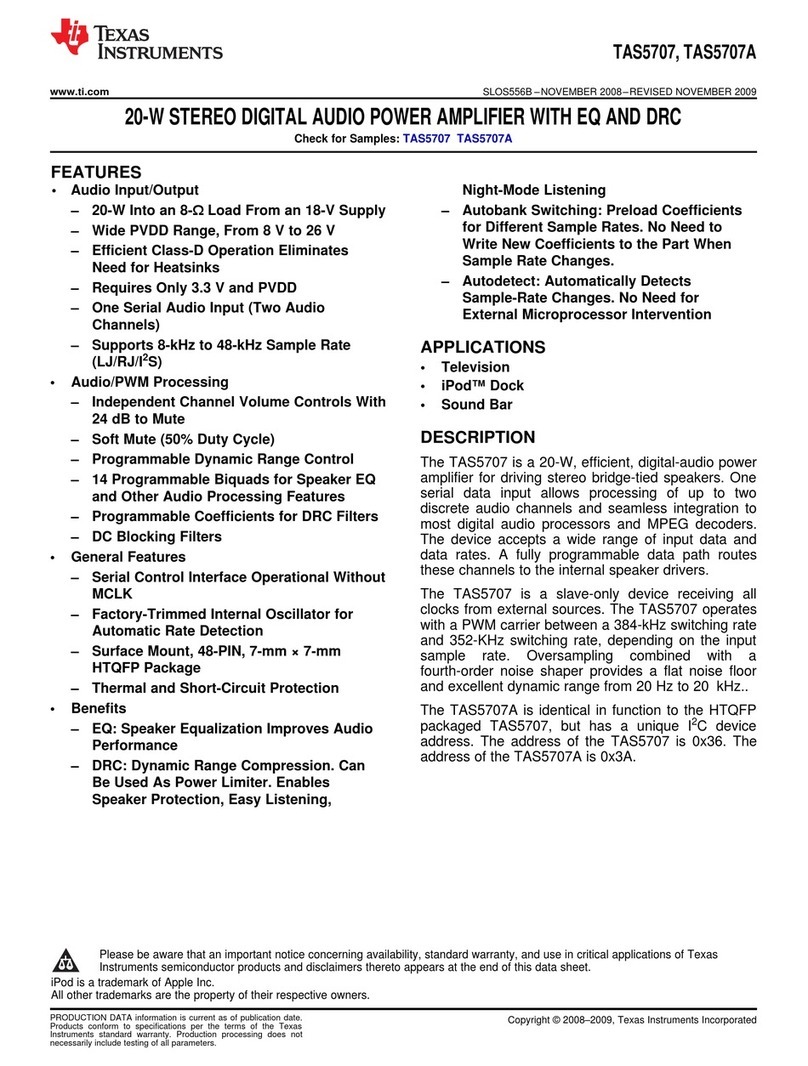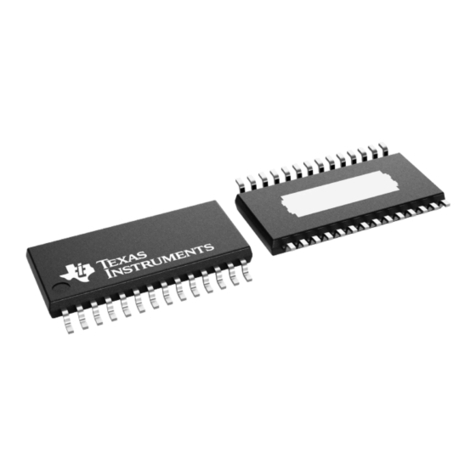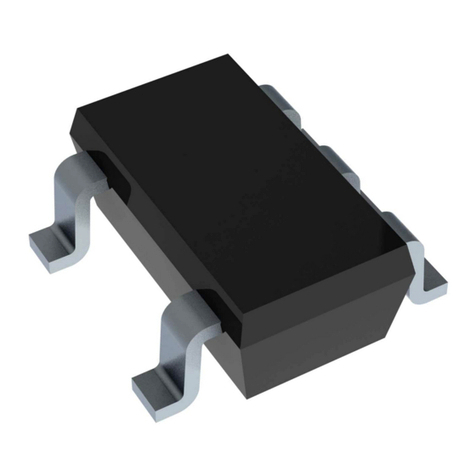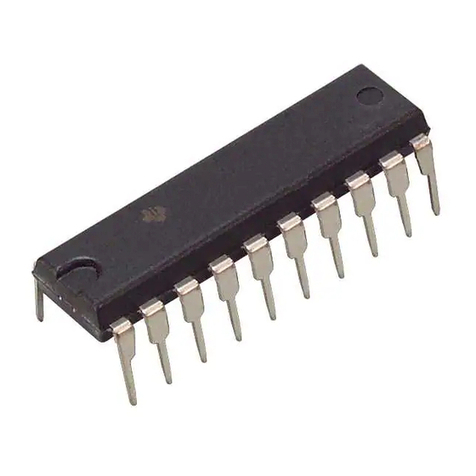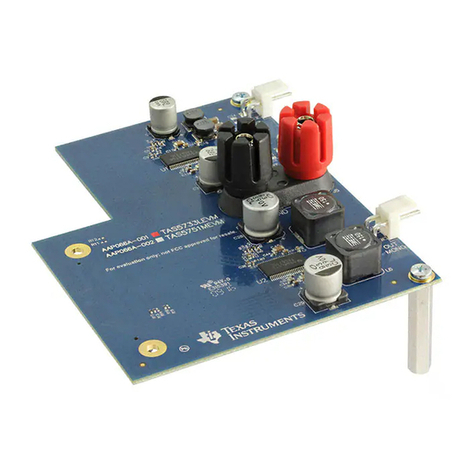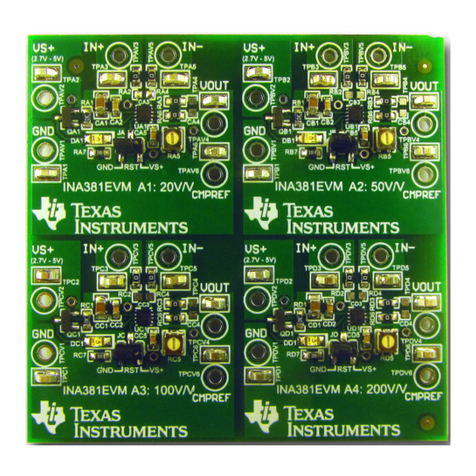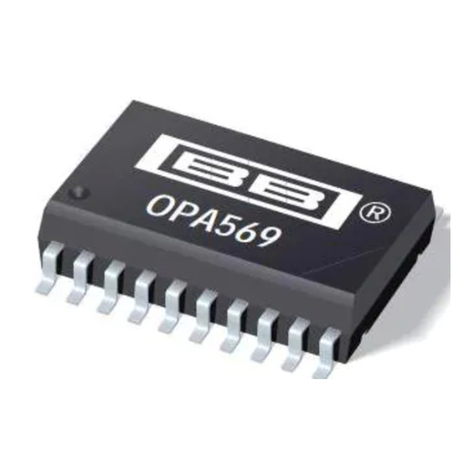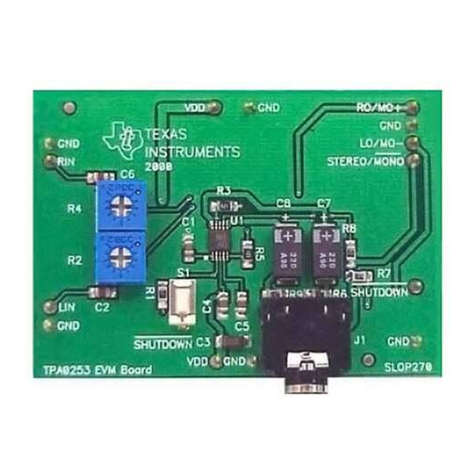
3.2.3 USB Interface
3.2.4 Digital Audio Interface SPDIF (J1/OPTO)
3.2.5 ADC Interface
3.2.6 Board Power-Up General Guidelines
Installation
•Connect the left speaker wires to the corresponding metal binding posts marked J2 and J4 on theTAS5601EVM board.•Connect the right speaker wires to the corresponding metal binding posts marked J6 and J8 onTAS5601EVM board.
For SE:•Connect the four sets of speaker wires to the pairs J2-J3, J4-J5, J6-J7, and J8-J9.
The TAS5601 registers are accessed through I
2
C bus lines SDA and SCL. The USB circuit and USBconnector on the MC5601 board facilitates the connection between a host computer and the device. TheEVM USB circuit is powered by the 5-V USB line of the host PC, and is independent of the power suppliesavailable on the board. The USB device used is a TAS1020B from Texas Instruments.
The Digital Audio Interface accepts digital audio data using the I
2
S protocol. See the TAS5706 data sheetfor more information.
The OPTO connector is the SPDIF interface on the MC5601 board. When the optical cable is connectedand the signal source is powered up, verify that the SPDIF lock indicator (blue LED3) illuminates,confirming that there is a viable signal available to the device. Install the four clock/data jumpers acrossthe middle pin and the pin marked SPDIF.
For detailed information on how the data and clocks are provided to the TAS5601, see the schematicappearing at the end of this document and the DIR9001 device data sheet .
In the absence of a digital signal source, the PCM1808 ADC may be used to convert an analog audiosignal to a digital signal to the TAS5601. The DIR9001 still provides clock signals to the ADC in thisprocess. The DIR9001 oscillator frequency (Y2) determines the sampling frequency in the absence of adigital signal. If the OSC frequency is 24 MHz, the sampling frequency is set at 96 kHz; if OSC is set at 12MHz, the sampling frequency defaults to 48 kHz when there is no signal on the SPDIF input terminals. A12-MHz crystal is installed on the MC5601 board. The ADC is an additional feature of this board toprovide flexibility in sourcing an audio signal to the TAS5601. Review the PCM1808 data sheet for adetailed description of the ADC on this EVM. Install the jumper on SDW2 across the middle pin and thepin marked ADC.
Connect the MC5601 and the TAS5601EVM boards by locating pin 1 on each board, indicated by a smallwhite triangle. The TAS5601EVM plugs into the MC5601 board. Pin 1 on each board should be connectedto each other.
Install the EVM software on the PC before powering up the board. After connecting the loudspeakers orother loads, power supplies, and the data line, power up the 5-V power supply first; then power up thePVDD power supply. It is recommended initially to set the PVDD level to 10 V, then ramp it up to 20 V toverify cable connections.
TAS5601 Digital Power Amplifier With MC5601 Modulator Kit6 SLOU219 – February 2008Submit Documentation Feedback
